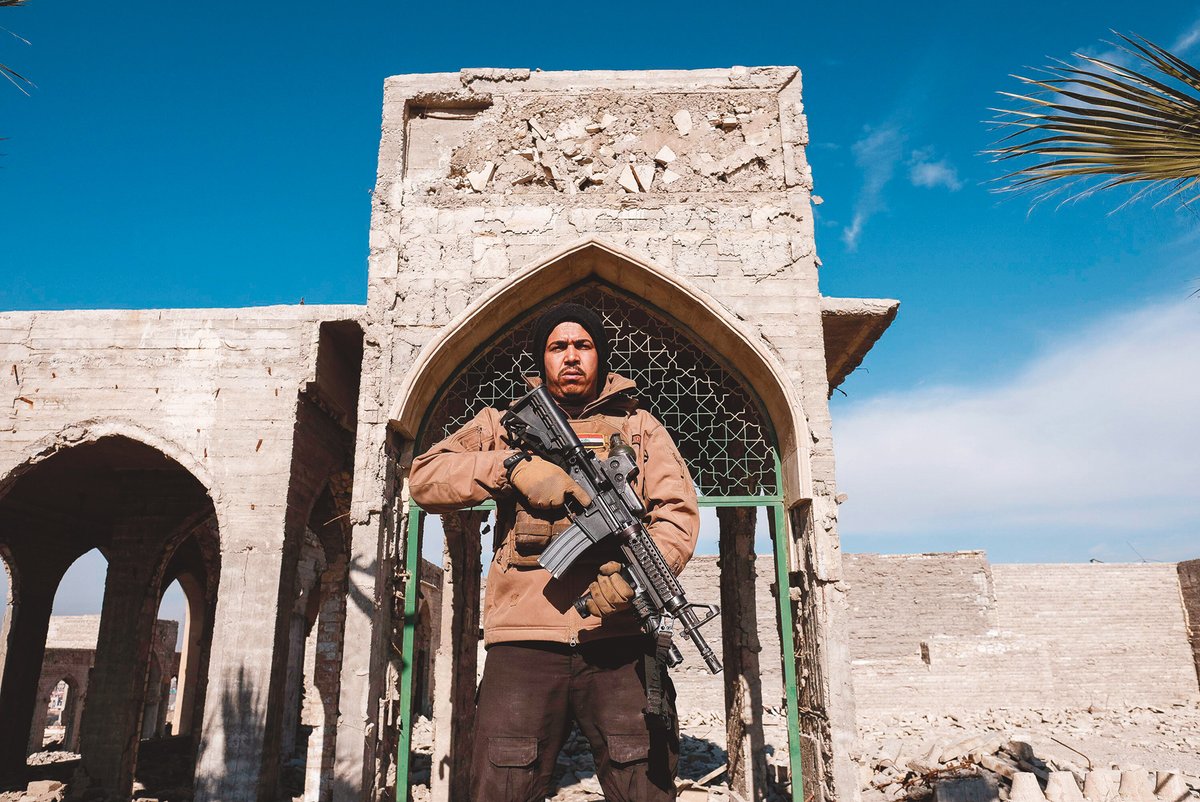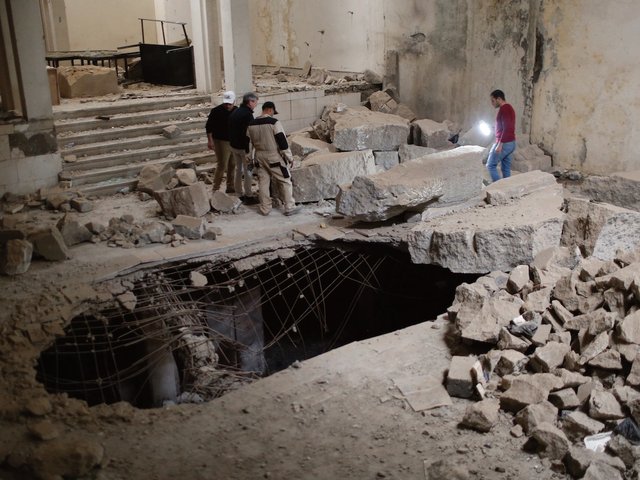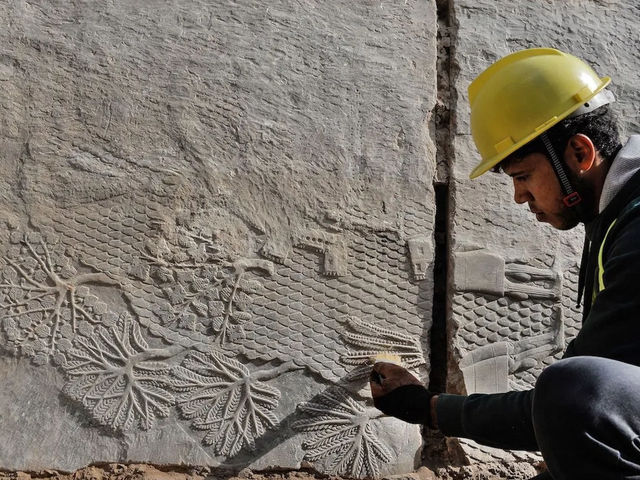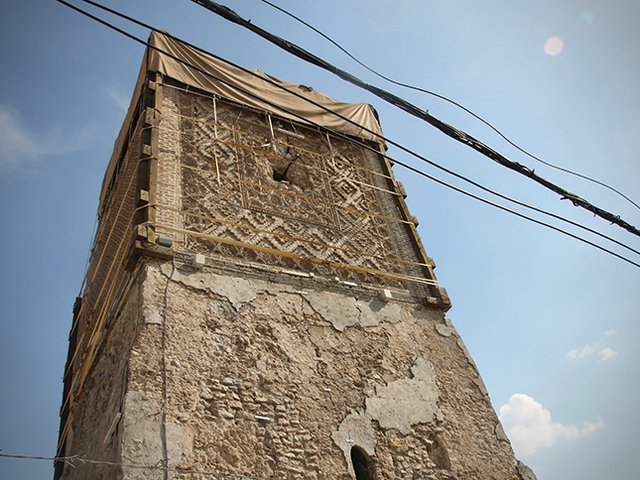The Mosul Cultural Museum was targeted and almost destroyed by the so-called Islamic State (Isis) when the terrorist group took over the Iraqi city in 2014. Less than a decade later, the partially restored museum has restarted its activities once again.
This month, the museum is hosting the first exhibition of artefacts from its collection since the attacks. The display will go on show in the newly restored former Royal Hall adjacent to the site. The museum itself will fully reopen to the people of Mosul in 2026 after an ongoing restoration project is completed. It is being rebuilt from the designs of its original architect, Mohamed Makiya, and will display restored objects from its established collection as well as new finds from archaeological excavations in the area.
“I have given an order that all the artefacts found from the current excavations in the ancient city of Nineveh must be brought to the museum, not to Baghdad,” says Laith Hussein, the head of Iraq’s State Board of Antiquities and Heritage, the arm of the Ministry of Culture that is overseeing the project alongside the cultural heritage agency ALIPH, the Musée du Louvre, the Smithsonian and the World Monuments Fund. “It’s important the museum is provided with these pieces,” Hussein says. “This is where they belong.”
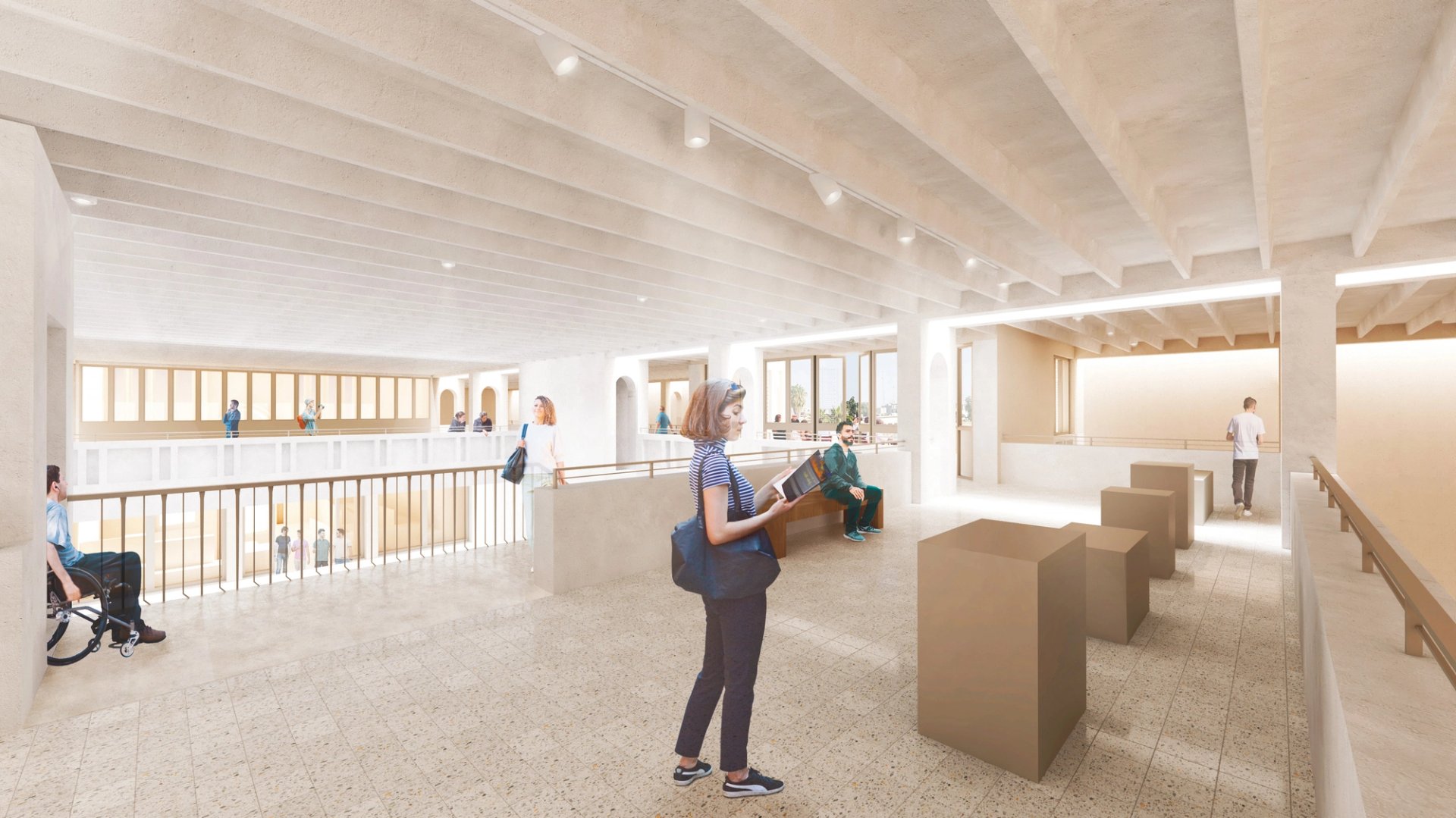
Rendering of the mezanine floor of the Mosul Cultural Museum, due to reopen in 2026; the restored building follows the original architect Mohamed Makiya’s plans © World Monuments Fund; Donald Insall Associates
This epic rehabilitation of Mosul’s museum, the second most important in the country after the Baghdad Museum, represents a symbolic step forward in the revival of the city.
Mosul was Isis’s main base in Iraq and the site of its last stand, and was won back in a protracted battle with a US-led coalition of forces. The conflict destroyed much of Mosul’s historic Old City. Even today, most of the city’s structures remain shattered, with gaping storefronts, bullet-hole-ridden façades and collapsed multi-storey buildings.
The museum itself, in the centre of the Old City, was hit by shelling, but most of the damage pre-dated the battle and came from Isis itself. In 2015, Isis adherents hacked apart statuary from the second-century city of Hatra with sledgehammers, in a video that remains online. In the museum’s Assyrian Hall, they placed dynamite under a ninth century BC platform for a throne that was laced with intricate cuneiform carvings. The explosion blew the throne base to pieces while a separate explosion took out the other sculptures in the room: two lamassu – the fanciful winged creatures typical of Ayssrian iconography – and an enormous lion that once guarded a temple in Nimrud.
“Destruction takes an instant,” says Ariane Thomas, the head of the Department of Near Eastern Antiquities at the Louvre, who joined the project in 2019. “But reconstruction can take forever.”
It took a year to properly clear and identify the rubble from the floor, says Daniel Ibled, the Louvre conservator who is leading the team of French and Iraqi specialists. Four years on, the throne base and lamassu are beginning to take on their former shapes. But it is a slow, painstaking process akin to solving a puzzle made of crumbling stone.
Balancing act
Those in charge of restoring the museum have sought a balance between remembering the realities of the Isis occupation and fully modernising the space. Following consultations with local Moslawi citizens, the museum has decided to retain the hole that was blasted through the floor in the Assyrian Hall from Isis’s dynamite explosion. The hall itself will remain closed to visitors, who will be able view it from a mezzanine above.
The rehabilitation will also restore Makiya’s original architectural designs. Mosul is Makiya’s only museum in Iraq, where he was known as an important Modernist architect and supporter of the artistic flowering that occurred in Iraq in the 1950s and 1960s. Makiya also co-founded and ran Al-Wasiti Gallery, where artists such as Jawad Salim and Faeq Hassan exhibited their work. He designed many buildings in Iraq and throughout the Gulf—but he was unable to see the opening of the elegant, Assyrian-inspired design that he drew up for Mosul. By the time the museum opened, in 1974, he had fallen out of favour with the Baathist regime and had to flee Iraq.
The museum has some deviations from the original plans, but experts at the World Monuments Fund, which is overseeing the rehabilitation, say they were unable to determine whether these were signed off by Makiya. They will, however, reverse changes made to the museum in 2008. Two small balconies on either side of the building were blocked off to create more gallery space, while the open apertures of the front façade were closed. This enabled more exhibition space by allowing a mezzanine to function as a gallery, but it drastically closed off the light and openness that was a key element of Makiya’s designs.
The contents of the museum, when it opens, will include the items that have been restored via the Louvre team, new Nineveh excavations and a collection of the museum’s original artefacts that were sent to Baghdad for safekeeping in 2003. Though the Isis destruction represents the most acute phase of damage to the museum, it has been closed on and off for 20 years—a woeful demonstration of the length of Iraq’s suffering. The items that were moved to Baghdad remained in storage, thereby evading the widespread plundering that the Baghdad Museum fell prey to. Also fortunate is the fact that, unlike the museum in Baghdad, whose inventory was reportedly lost, the Mosul Cultural Museum retained more comprehensive records of its collection.
The museum and the Louvre teams have been working over the past four years to identify exactly what has been lost, publishing a detailed list of 68 objects in a catalogue, on the web and via Interpol, in the hope of recovering any artefacts that resurface in private collections or auction sales. Though this catalogue—which also furnishes the material for the exhibition next door to the museum—might seem a narrow academic accomplishment, it is in fact a major record that goes some way towards allowing these objects, whether looted or destroyed, to live on in memory. But it is also partial: in a fire that they started with highly flammable asphalt, Isis also torched the museum’s library of around 25,000 manuscripts. It is likely that other objects not correctly inventoried were also lost.
International collaboration
In Mosul overall, the scale of international collaborations matches the sense of what was lost. The city was known for its religious tolerance, with a symbolic “conversation” between the call to prayer from its famous Al Nuri Mosque minaret and the church bells of Our Lady of the Hour, two towers that dominate the skyline.
Both sites are now being restored by Unesco (with funds from the UAE and ALIPH). ALIPH, which was in part created in response to Isis’s campaign of destruction, is working on eight further sites across the city as well as steering the Mosul Museum project.
Though progress is slow, restoration work is taking place across the Old City, both for cultural sites and everyday homes. (I asked a young Moslawi what the local economy was. He gestured at the storefronts full of people selling car parts, refrigerator panels and other dusty items. “Fixing things,” he said.)
But security also feels tenuous. The constitution mandates equal representation between the Shia and the Sunnis, and this equilibrium is by and large accepted on the ground. There are some remaining Isis cells in very rural areas , but there have been almost no incidents of kidnapping or violence over the past few years. Yet the high presence of militarised forces and the sheer number of firearms in daily circulation means that any renewed conflict could easily escalate.
The press conference at the Mosul Museum opened with remarks from the Minister of Culture and Hussein—in a show of commitment from the federal government. But security was tight: the area was swept for bombs twice and the perimeter was guarded by men with AK-47s—which, by the time of the press conference, seemed perfectly normal. My delegation, which was supported by ALIPH, had spent all our time in federal Iraq under armed protection. A group of Kurdish personnel drove us into Mosul from Erbil in armoured cars, our handlers stopping to put on flak jackets and take out firearms after we passed the checkpoint into federal Iraq.
The future of Mosul’s museum, and Mosul as a whole, cannot be taken for granted. Nevertheless, local residents are now discussing the benefits of cultural tourism and a diversified economy—but these things will not happen unless those with resources act as if they will.


